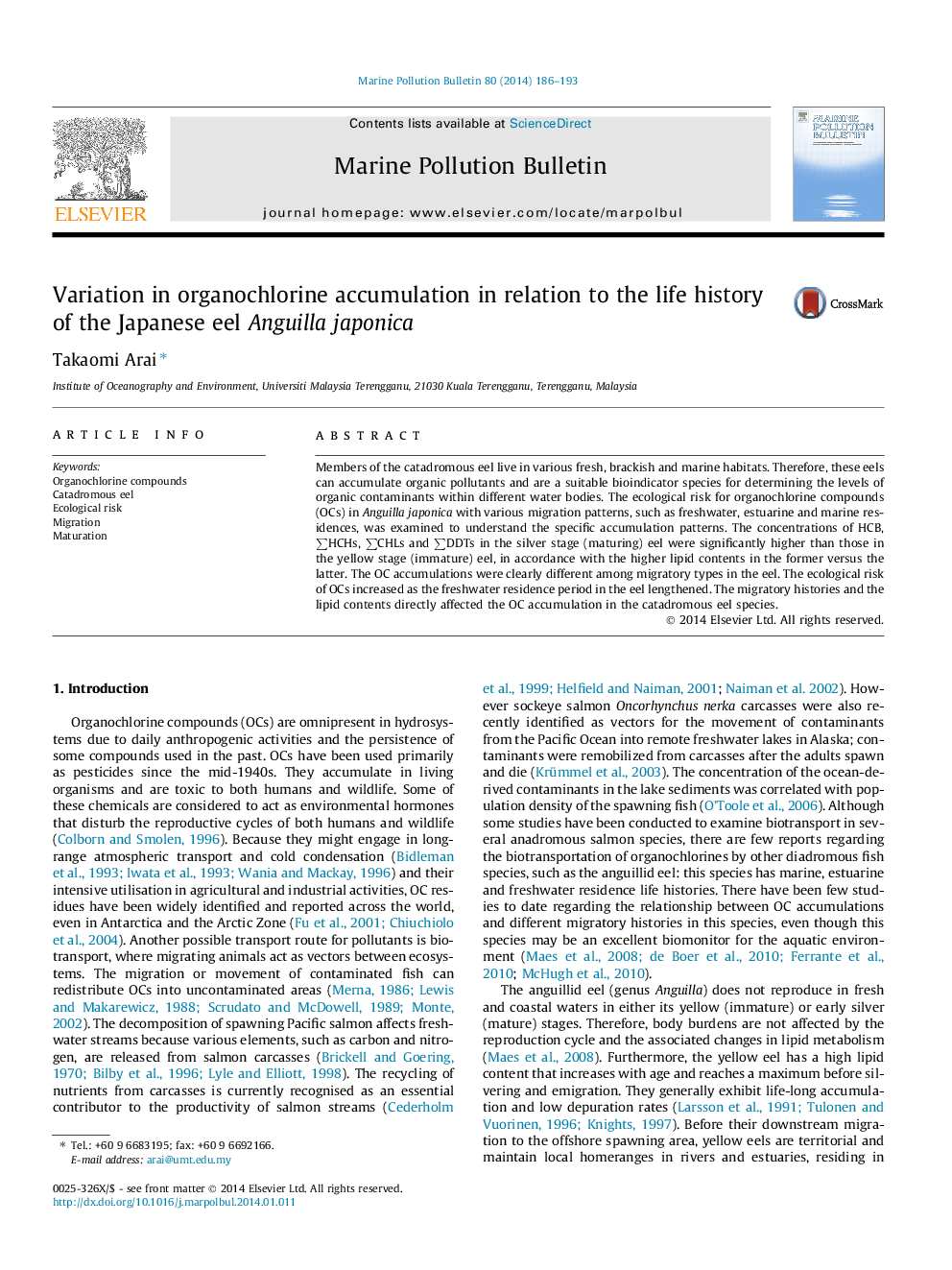| Article ID | Journal | Published Year | Pages | File Type |
|---|---|---|---|---|
| 6358045 | Marine Pollution Bulletin | 2014 | 8 Pages |
Abstract
Members of the catadromous eel live in various fresh, brackish and marine habitats. Therefore, these eels can accumulate organic pollutants and are a suitable bioindicator species for determining the levels of organic contaminants within different water bodies. The ecological risk for organochlorine compounds (OCs) in Anguilla japonica with various migration patterns, such as freshwater, estuarine and marine residences, was examined to understand the specific accumulation patterns. The concentrations of HCB, âHCHs, âCHLs and âDDTs in the silver stage (maturing) eel were significantly higher than those in the yellow stage (immature) eel, in accordance with the higher lipid contents in the former versus the latter. The OC accumulations were clearly different among migratory types in the eel. The ecological risk of OCs increased as the freshwater residence period in the eel lengthened. The migratory histories and the lipid contents directly affected the OC accumulation in the catadromous eel species.
Related Topics
Physical Sciences and Engineering
Earth and Planetary Sciences
Oceanography
Authors
Takaomi Arai,
